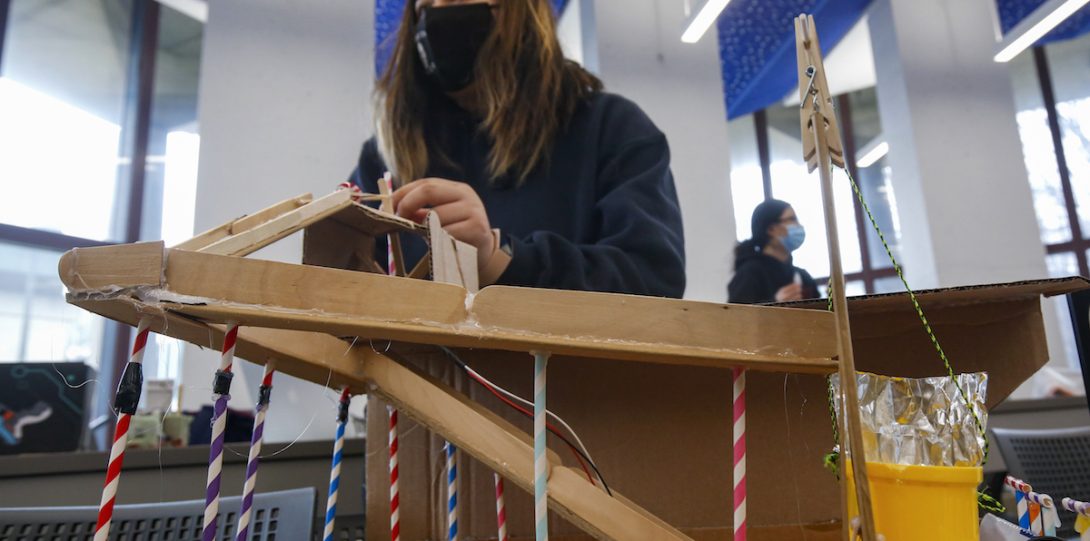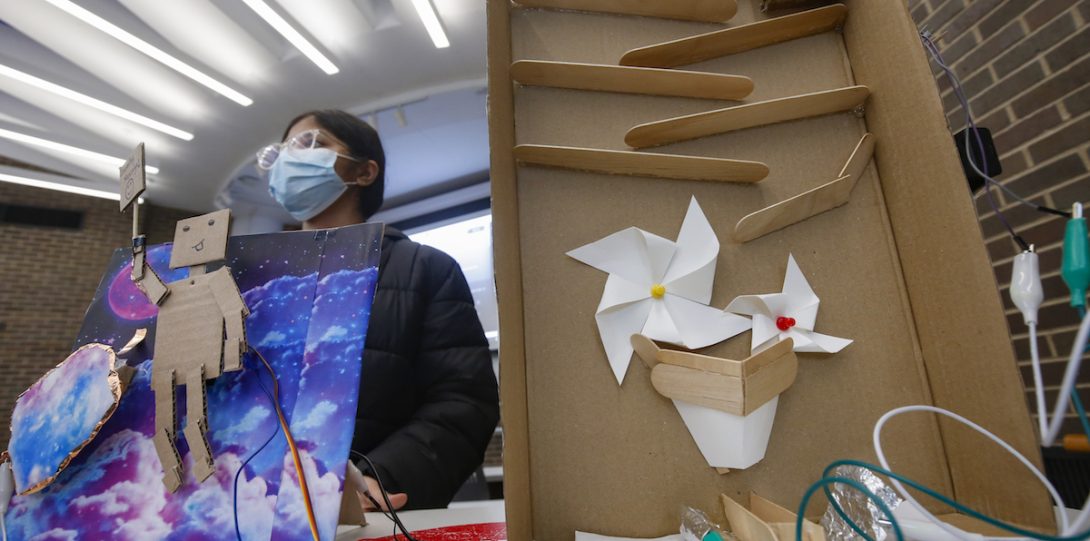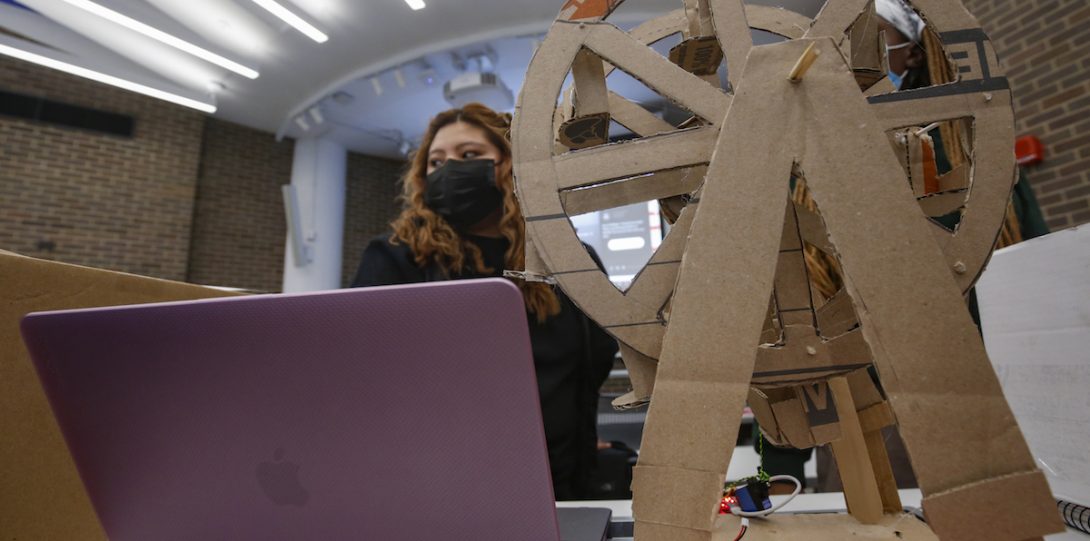CS111 students create an elaborate chain of micro-motion projects
CS111 students create an elaborate chain of micro-motion projects
Program Design I (CS 111) is often one of the first classes UIC students who are interested in computer science or data science take.
The class serves as an introduction to problem solving through programming, using control structures, data types, variables, input, and output to design and implement ideas.
While CS 111 is offered regularly to all students, two sections per year are sponsored by UIC’s Break Through Tech Chicago, an initiative that works at the intersection of academia and industry to increase gender diversity in the tech world by preparing more women with the college majors they need to compete — and succeed — in tech.
These special CS 111 sections provide women (cis and trans) and nonbinary individuals the chance to work together in a slightly different format than other CS 111 sections, with students combining hands-on lab and lecture sections each day.
“Students are motivated by interacting with the physical world, thinking about how controlling computers can help them do things, and not just exist behind the screen,” said Dale Reed, a clinical professor of computer science and curriculum lead for Break Through Tech Chicago, who taught this 15-week session.
Ciara Taylor, a student in the class, appreciated the opportunity to take the CS 111 section offered by Break Through Tech Chicago.
“I was surrounded by people who looked like me, were around the same level as me and were also trying to see what computer science is all about,” said Taylor. “I loved how creative the projects were, and enjoyed the multiple guest speakers and the professors, I would recommend this 100% to any woman or non-binary person curious about computer science.”
This spring, students in the course created an elaborate Rube Goldberg machine that connected each of the student’s individually designed projects together. Rueben Goldberg, a cartoonist and inventor, drew over 50,000 cartoons that often featured inventions that solved simple tasks in the most overly-complicated, inefficient way possible.
Students designed and created pinball machines, loops, bowling alleys, and garage door openers, among other devices, that all had a simple goal: to set the device in motion for 3-10 seconds, ending in a radio signal trigger to activate the next device in the chain. This was achieved with micro:bits, tiny Internet-of-Things (IOT) devices half the size of a credit card, which can be programmed to respond to sensor inputs and control small motors.
Each student submitted pictures of their device, what they do, and a screenshot of the code they wrote to achieve the action their device took. Ultimately, the devices were connected together to complete the Rube Goldberg machine.
Break Through Tech Chicago will host a second, tuition-free section of the class in summer session I.
Ciara Taylor's Rube Goldberg project
A video of Ciara Taylor’s Rube Goldberg project



